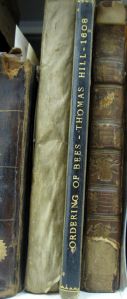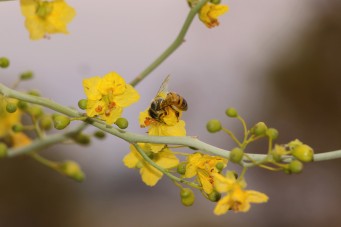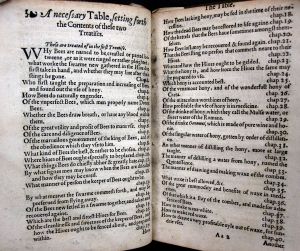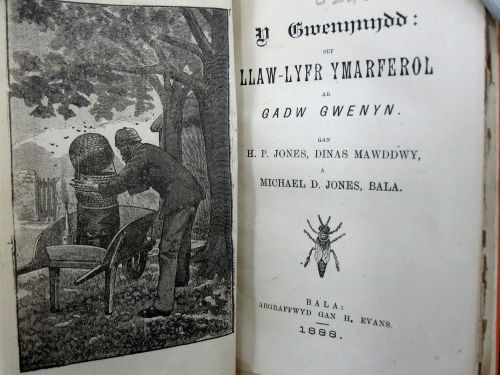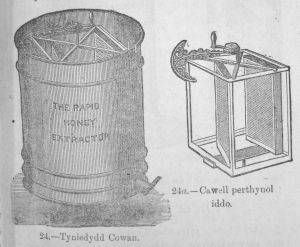Yet another fascinating post from recent PhD graduate Lauren O’Hagan on her poignant discoveries in the Janet Powney Collection of Children’s Literature.
Thursdays have become my new favourite day of the week. Why? Because I get to spend the day in Special Collections and help catalogue the Janet Powney Collection – the fantastic assortment of Victorian and Edwardian children’s literature. Every week, the Collection brings a new surprise or delight. In recent weeks, I have come across such unique treasures as a copy of What Katy Did Next mysteriously inscribed two years before its actual publication date and a beautiful 1871 edition of Hetty’s Resolve hand-bound and gilded by a devoted husband to his wife. I may have also accidentally uncovered a nineteenth-century insurance scam involving the arson of a pub (but more about that another time!). But something that has remained a bittersweet constant over the past few months has been the fact that, hidden in most of these books, are some of the forgotten voices of World War One.

John’s Adventures by Thomas Miller, London, c. 1897. Prize awarded to young Albert Stopher.

The Swan’s Egg by S. C. Hall, London, c. 1895. Awarded to a very young George Stopher in 1905.
Behind the beautiful pictorial covers of these treasured Sunday school prize books lie the tragic tales of many of the working-class men who marched off to war to fight the Germans just a few years later. Beguiled by the notion of adventure or the ‘Great Game’, as Kipling put it, many would never return. I would like to use the blog space this week to share the story of two incredible brothers. In doing so, I hope to show how book inscriptions may offer a new way to explore and explain the War, keeping alive the stories of soldiers for future generations now that the conflict only exists outside of human memory.
George Stopher and Albert Stopher
When the Stopher brothers, George and Albert, received The Swan’s Egg and John’s Adventure from St John’s Church of England Sunday School for attendance, good conduct and progress in 1905, little did they know that some years later, they would be dressed in military uniforms and sent off to battle in France.
George and Albert came from a working-class family in Saxmundham, Suffolk. Born just one year apart in 1896 and 1897, respectively, the boys grew up at White House Farm Cottages, with their parents, Herbert (a farm labourer) and Lydia, and six other siblings.
When George and Albert left school, they quickly found work as gardeners. However, the job was precarious and poorly paid. As a result, both boys enlisted quickly in the Suffolk Regiment of the army upon the outbreak of World War One in 1914. George served in the 8th Battalion and Albert in the 11th Battalion. After completing training in Ripon, Yorkshire and Salisbury Plain, George landed in France in July 1915, while Albert arrived in January 1916 – both ready for action on the Western Front. Shortly after his arrival, George became wounded and spent some weeks recuperating in hospital before returning to action.

Inscription recording the award of The Swan’s Egg to George in 1905.
During their time in France, George and Albert regularly corresponded with their families and sweethearts. There is a wonderful surviving archive of their letters hosted at Suffolk Record Office in Ipswich. The letters vividly describe their experiences of war. In August 1916, George was hospitalised once again for shellshock. A surviving letter to his mother poignantly states that sending him back to the front line would be like “sending a rat to catch a dog.” It is surprising that it got past the censor.
On 9th April 1917, the Battalions began the Arras offensive, advancing slowly to attack German defences near the city of Arras. The next day, both George and Albert took place in the First Battle of the Scarpe, which involved a series of attacks that pushed the Germans back north and south of the Scarpe river. Tragically, Albert was shot by an enemy and died immediately. He was just 19 years old. His body was never recovered. Today, he is remembered on the Arras Memorial at the Faubourg d’Amiens Cemetery.
George continued on in what must have been harrowing circumstances. He successfully took part in the Second Battle of the Scarpe (April 1917), helping to capture part of the Hindenburg position and push the Germans to the Drocourt-Quéant line south of the River Scarpe. However, during the Third Battle of the Scarpe (May 1917), which involved a general offensive by all three armies astride the Scarpe to secure better defensive positions, he was badly wounded. George held out for nine days in a field hospital before succumbing to his wounds and dying on May 19th 1917 at 21 years old. He was buried in the Warlincourt Halte British Cemetery at Saulty.
Tragically, Herbert and Lydia Stopher had to deal with the loss of two sons, just over one month apart from each other.
Today, George and Albert’s medals are on show at the Suffolk Regiment Museum. Their names are also commemorated on a War Memorial in Saxmundham Parish Church. In recent years, Rachel Duffett, a lecturer at the University of Essex and a member of the Everyday Lives in War Centre, has painstakingly attempted to retell their stories using the letters held at Suffolk Record Office. She plans to write a book on the subject and work with local seamstresses to recreate some of the local landscapes where the Stopher brothers grew up.

Inscription recording the award of John’s Adventures to Albert in 1905.
With its unique range of nineteenth- and early twentieth-century prize books, I already found the Janet Powney Collection to be exceptional. Now knowing some of the stories that are lingering like shadows between the colourful covers of these volumes, I feel even more appreciation for the Collection. While buildings no longer stand, communities have passed on and grass on the bloody battlefields grows once more, these books keep alive the memories of many of the brave men and women who gave their Today for our Tomorrow. They stand as a testimony of the unsettling victory of material objects over the temporality of the people that once owned them and the places in which they formerly dwelled.
“The living owe it to those who no longer can speak to tell their story for them.”






